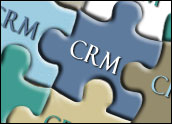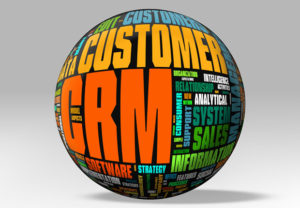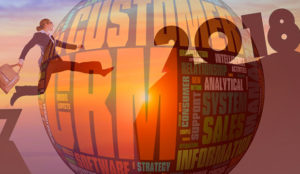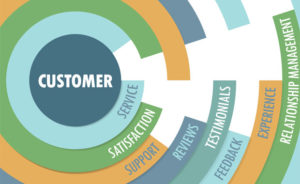
We all know about the idea of total cost of ownership, or TCO, and the concept of return on investment, or ROI. Both have their place in business evaluations of CRM. There’s another measurement, however, that should be considered — one I like to call “time to value” — T2V.
The T2V test is simple: From the time you begin deployment of a CRM solution, how long did it take before the solution delivered real business value as measured by criteria that you defined?
Know What Value Means
In days of yore — say, around 2003 — any discussion of rapid return on investment in CRM would have seemed crazy. After all, with an old-school, on-premise application, the key resource is time: Time to install the hardware, time to find staff, time to deploy and configure the software. All of that pushed out deployment dates and, as a result, pushed back the time it took to start reaping CRM’s rewards.
Cloud computing has changed that. Now, with applications delivered via the cloud directly to the users’ desktop browsers, that preparatory phase of infrastructure set-up has been bypassed.
Now there’s no excuse for a long wait for value from CRM. But before you can determine how rapidly you’re gaining value from your CRM implementation, you need to understand what “value” means in the context of your company.
That means understanding your goals and the goals of your CRM initiative. Many CRM failures are attributable not to technology woes but to a set of criteria that changes during the course of an implementation — or worse yet, to a complete lack of any defined goals.
“Make my business run better” is not a well-defined goal. Well-defined goals might instead be couched in these terms:
- Better sales conversion rates
- Quicker movement of prospects through the sales pipeline
- Reduced customer service call times
- Better rates of customer service satisfaction
- Lower costs for lead generation due to efficient lead nurturing
- Increased revenues from existing customers
- Reduced customer churn
All of these can be delivered by CRM when it’s used properly. However, especially early on in a CRM initiative, you can’t get all of them simultaneously — you must pick the ones that bring the greatest value to your business. Don’t pick too many at first; two or three related goals are the best gauges of how effectively your CRM application is paying off in the early stages.
Also note that there is no metric based on the business’s collective top-line revenue. These goals, if achieved, will increase your revenues. To understand how quickly CRM is paying off, though, you’ll need to isolate what you can control through CRM from the larger revenue statistics, which may be affected by factors that are beyond CRM — seasonality, for example, or interruptions in the supply chain.
Fix Your Data!
Even as deployment models change, some things remain the same. While CRM vendors have applications that can be set up and deployed rapidly, often the thing that inhibits T2V is something lurking within your company already. The single biggest impediment to quick return on a CRM investment is the quality and consistency of data. This is a universal problem that plagues even the most disciplined companies, and it manifests itself in several ways.
The first of these issues is consistency. If data in the past has been entered into a database without a set of format policies in place, it’s likely that there’s a great deal of duplication of customer records. For example, let’s pretend you have a business partner called Barracuda Studios, and they’re located at 223 Elm Street in Fremont, California. Without a set of conventions for how this information is entered into the system, you might have listings that look like this:
- Barracuda Studios, 223 Elm St., Fremont, CA
- Barracuda Studios, 223 Elm Street, Fremont, CA
- Barracuda Studios, 223 Elm St., Fremont, Calif.
- Barracuda Studios Inc., 223 Elm St., Fremont, CA
- Barracuda Studios, 223 Elm Street, Fremont, California
… and on and on. All this contact information is about the same customer — but the application may have a hard time understanding this, so it’s likely you have duplication of customer records or unintentional separation of customer activities. In either event, it’s detrimental.
If you’re looking to migrate to a new CRM system, or if you’re adopting CRM for the first time, it’s not wise to import this kind of data as-is and then tease out duplications later. That work will delay your ability to meet your goals with CRM. Instead, it’s a wise idea to address “data hygiene” by hiring a third party who specializes in “data scrubbing” before you make the jump to a new CRM application.
Doing this kind of work in-house is extremely time consuming and will push out the deployment date of your CRM implementation; that in itself will destroy any chance at a quick time to value. Using a specialist to accomplish this task will shorten the time it takes to get the data ready to migrate. Specialist companies that do this regularly can scrub data far faster than IT departments who do it only occasionally, while allowing your IT team to work on getting the CRM application ready.
The other issue here is that data ages poorly — as much as 20 percent of a company’s customer database becomes inaccurate every year. Culling this data out is as important as cleaning away redundancies. By doing this work at the start of an implementation, you will position your CRM project for success and quick T2V.
























































Great pointers. However, I think I’d add one more to the list: Be sure to pick a simple CRM software that will make all of this easier to achieve.
I’ve heard of so many CRM implementation horror stories, and every single one lays the blame squarely on the CRM providers for creating software that’s just too darn hard to figure out.
If you don’t have previous CRM experience, start with something that will be easy enough to get into. Try software from Nimble, Insightly, or JobNimbus and you’ll be sure to have an easy time learning the software and teaching it to employees, plus they have great customer service to go along with their stuff.